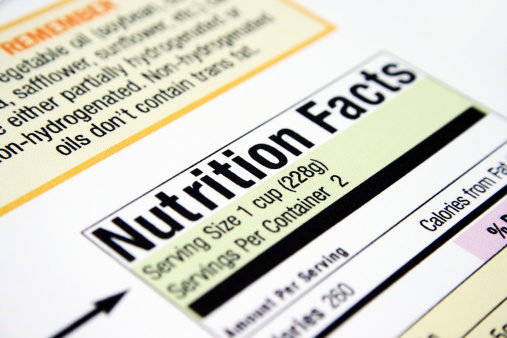
FDA Releases Guidance and Draft Guidance Regarding Labeling and Single-Serve Packaging

It should be noted that, in the FDA’s words, “guidance documents do not establish legally enforceable responsibilities. Instead, guidances describe our current thinking on a topic and should be viewed only as recommendations, unless specific regulatory or statutory requirements are cited.” They specify that the use of the wordshouldin a guidance does not mean that something is required, only recommended.
The guidance documentis in relation to the rules published on May 27, 2016, which, among other things, required the declaration of added sugars, updated the list of vitamins and minerals of public health significance, increased the prominence of the declaration of calories, and updated some reference values for nutrients.
It begins with questions and answers, which include citations, indicating that the answers are legally binding. It states, first and foremost, that products labeled on or after the applicable compliance date must bear a nutrition label that meets the new nutrition labeling requirements. They do not object to the use of a sticker to provide a revised nutrition label, if the new packaging has not yet been printed, as long as it doesn’t cover any other mandatory information.
The second question clarifies how a company can determine their annual food sales: either by taking the smallest sales volume from the previous three years, or take the average of the sales volumes of the previous three years. “Annual food sales” covers domestic and international sales.
The guidance further states that a supplier has the responsibility to ensure that all information regarding ingredients it supplies to manufacturers is accurate, while the manufacturer has the responsibility for the accuracy of the label. A distributor that purchases a finished food and labels the product under its own brand name would assume responsibility for the accuracy of the label. The manufacturer is responsible for the records that support the nutrient declarations on their product labels, unless a distributor labels products under its own brand name, in which case they would be required to produce information supporting the nutrient declaration.
They clarified the definition of added sugars: it is sugars that are either added during the processing of foods, or are packaged as such. Therefore, a bag of sugar would have added sugar listed. They also specify that there are certain foods that are sugars: sugar, corn syrup, and honey would all be considered sugars, whereas concentrated apple juice, if made from 100% juice, would have 0 added sugars. However, if used to sweeten another food, the sugars the juice contains would count as added.
The guidance goes in-depth regarding added sugars in fruit preserves, jams, dried and powdered fruit, fermented products, and vinegar, and precise mathematical methods of calculating added sugars.
It also discusses proper labeling for amounts of vitamins and minerals in terms of proper rounding, levels at which the amounts are not required to be specified, and how to handle Reference Daily Intakes (RDI) when the amount is particularly small.
The draft guidanceregarding serving sizes opens with a discussion of single-serving containers. It establishes that, as per regulation, a serving size must be written in a common household measure or unit, such as a cup, piece, slice, ounce, jar, or bottle. It suggests methods for determining which unit to use.
It establishes that a single serving is something that is reasonably capable of being eaten in one eating occasion. To be specific, it would be 200% or less of the reference amount customarily consumed (RACC). It allows for products that contain more than 200% of the RACC to be labeled single-serving as long as it bears dual-column labeling including nutrition information for a serving of the product as well as for the entire container. It also allows single-serving containers containing more than one discrete unit to provide an additional column of nutritional information per unit.
It goes in-depth regarding methods of determining an RACC, and of establishing a serving size for a product based on the RACC.
It states that dual-column labeling is required for products that are packaged and sold individually, but have more than 200% RACC, and then details exemptions from that requirement. Products that are small are exempt, and several other products can have the second column exchanged for one that better informs the consumer, following the FDA regulations regarding the new column.
It also addresses several miscellaneous topics, such as serving sizes and nutrition facts labels for chewing gum, the location of nutrition facts and supplement facts labels, labeling of coffee, tea, and bottled water—which will remain exempt from nutrition facts labeling—and requirements for multiunit retail packages.
Comments can be made on the draft guidancehere.
Related Articles

The editorial team at WholeFoods Magazine has decades of experiences reporting on natural products industry news, trends, and more. This national, monthly business-to-business magazine has been published continuously for nearly 40 years (the magazine was founded in 1977, and has been owned by Wainer Finest Communications since 1984). It is the longest-tenured media outlet of its kind in the natural products industry. The editorial focus at WholeFoods Magazine is, and always has been, on informing and educating members of the natural products industry.
The Magazine
Information
About Us
NOTE: WholeFoods Magazine is a business-to-business publication. Information on this site should not be considered medical advice or a way to diagnose or treat any disease or illness. Always seek the advice of a medical professional before making lifestyle changes, including taking a dietary supplement. The opinions expressed by contributors and experts quoted in articles are not necessarily those of the publisher or editors of WholeFoods.







